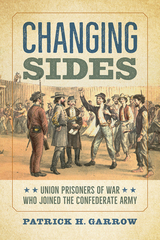
The rapid growth and development of urban areas in the South have resulted in an increase in the number of urban archaeology projects required by federal and state agencies. These projects provide opportunities not only to investigate marginal areas between the town and countryside but also to recover information long buried beneath the earliest urban structures. Such projects have also created a need for a one-volume update on archaeology as it is practiced in the urban areas of the southeastern United States.
Archaeology of Southern Urban Landscapes will assist practitioners and scholars in the burgeoning fields of urban and landscape archaeology by treating the South as a distinctive social, geographic, and material entity and by focusing on the urban South rather than the stereotypical South of rural plantations. The case studies in this volume span the entire southeastern United States, from Annapolis to New Orleans and from colonial times to the 19th century. The authors address questions involving the function of cities, interregional diversity, the evolution of the urban landscape, and the impact of the urban landscape on southern culture. By identifying the relationship between southern culture and the South's urban landscapes, this book will help us understand the built landscape of the past and predict future growth in the region.

Toward the end of the American Civil War, the Confederacy faced manpower shortages, and the Confederate Army, following practices the Union had already adopted, began to recruit soldiers from their prison ranks. They targeted foreign-born soldiers whom they thought might not have strong allegiances to the North. Key battalions included the Brooks Battalion, a unit composed entirely of Union soldiers who wished to join the Confederacy and were not formally recruited; Tucker’s Regiment and the 8th Battalion Confederate Infantry recruited mainly among Irish, German, and French immigrants.
Though the scholarship on the Civil War is vast, Changing Sides represents the first entry to investigate Union POWs who fought for the Confederacy, filling a significant gap in the historiography of Civil War incarceration. To provide context, Patrick Garrow traces the history of the practice of recruiting troops from enemy POWs, noting the influence of the mostly immigrant San Patricios in the Mexican-American War. The author goes on to describe Confederate prisons, where conditions often provided ample incentive to change sides. Garrow’s original archival research in an array of archival records, along with his archaeological excavation of the Confederate guard camp at Florence, South Carolina, in 2006, provide a wealth of data on the lives of these POWs, not only as they experienced imprisonment and being “galvanized” to the other side, but also what happened to them after the war was over.
READERS
Browse our collection.
PUBLISHERS
See BiblioVault's publisher services.
STUDENT SERVICES
Files for college accessibility offices.
UChicago Accessibility Resources
home | accessibility | search | about | contact us
BiblioVault ® 2001 - 2024
The University of Chicago Press









